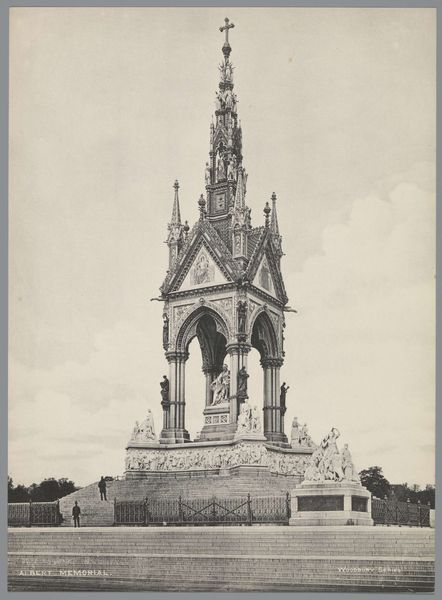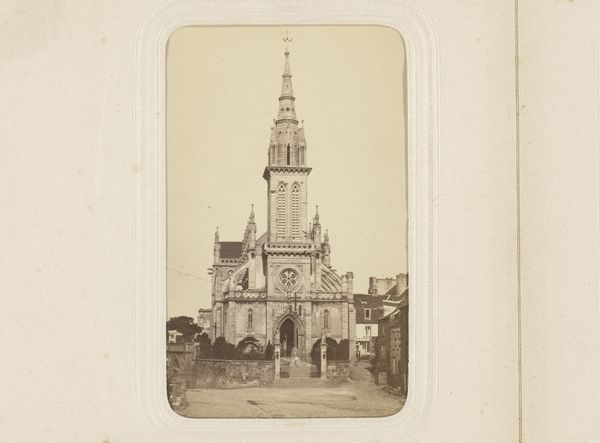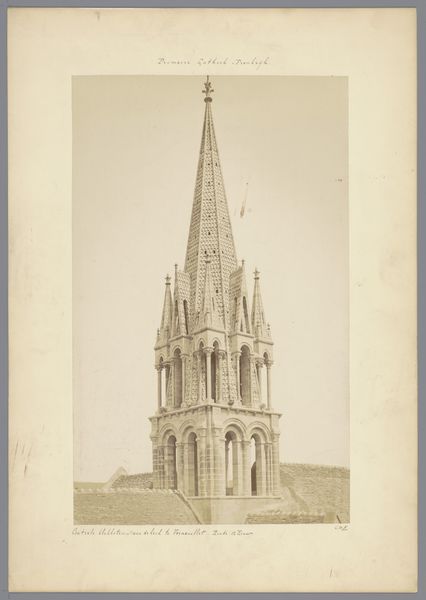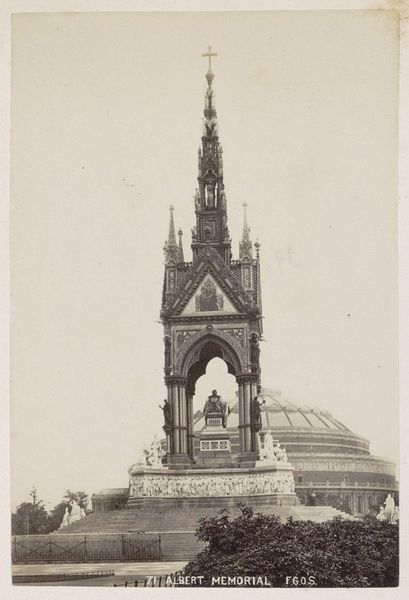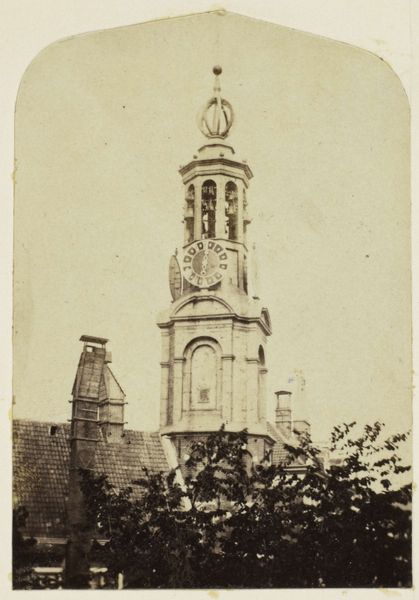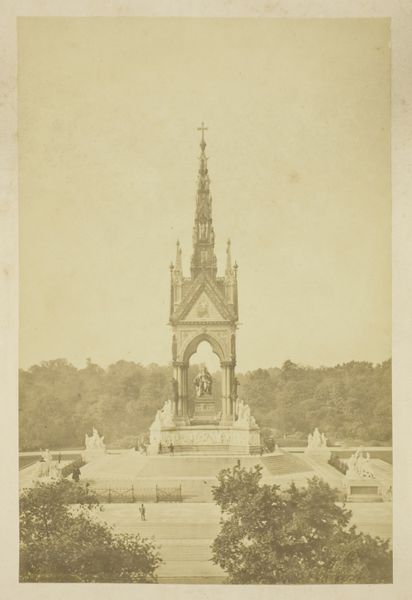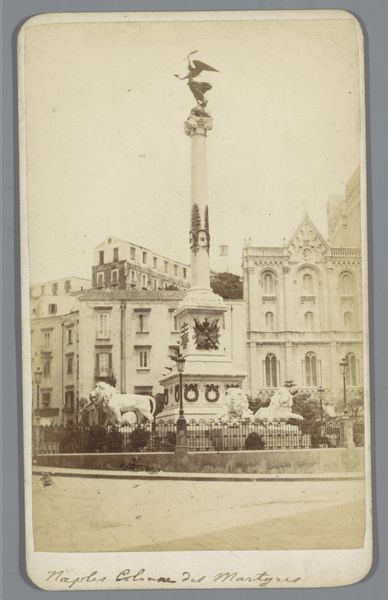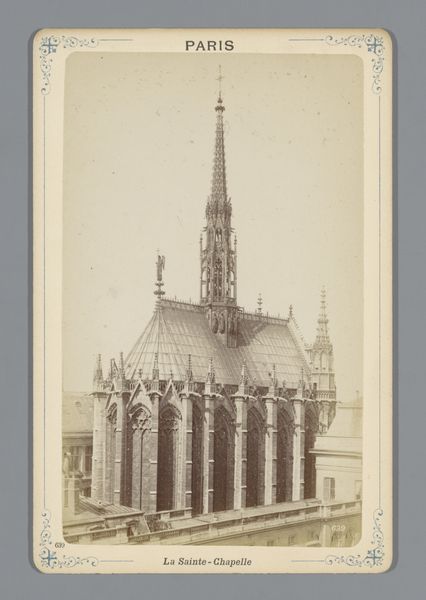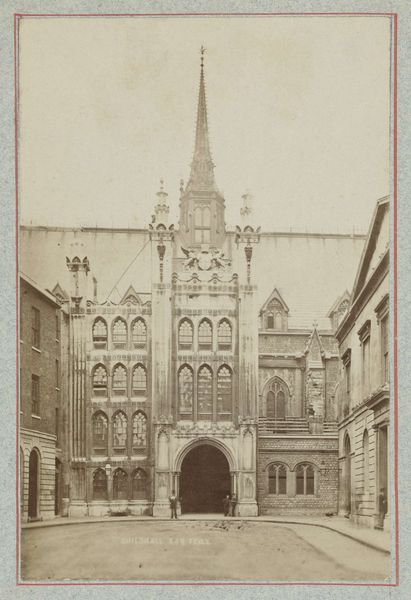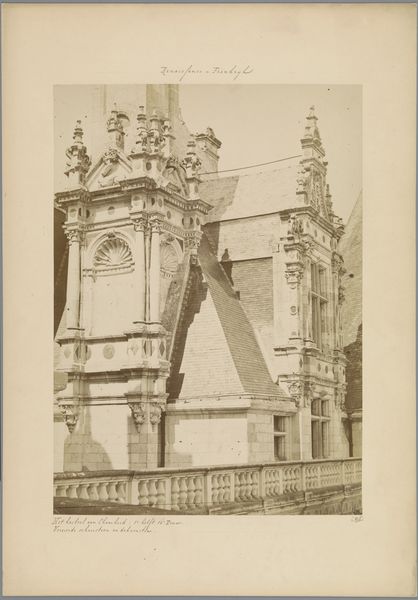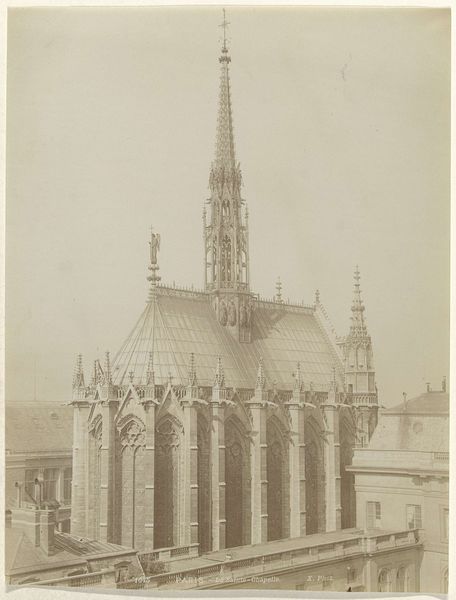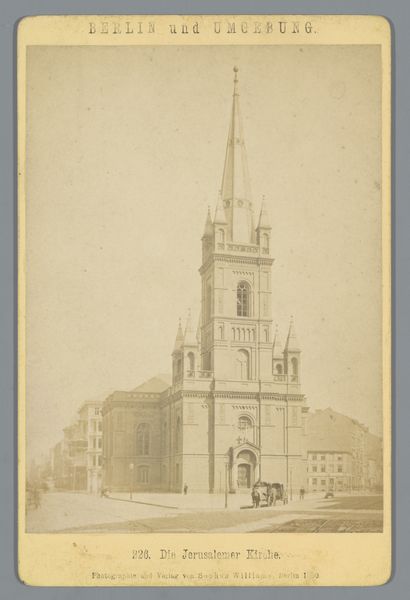
Albert Memorial in de Kensington Gardens in Londen 1870 - 1881
0:00
0:00
photography, sculpture, albumen-print, architecture
#
landscape
#
photography
#
sculpture
#
19th century
#
albumen-print
#
architecture
Dimensions: height 111 mm, width 169 mm, height 241 mm, width 343 mm
Copyright: Rijks Museum: Open Domain
Curator: What strikes me first about this albumen print of the Albert Memorial, taken between 1870 and 1881, is its solemnity. It rises against the sky, imposing and elaborate. Editor: It certainly emanates power and privilege, doesn't it? It is almost dizzying how much this monument communicates about Victorian values. I see order, grandeur and empire… but I wonder at what cost that was extracted. Curator: Well, its very presence is, of course, tied to a profound personal loss. Queen Victoria commissioned it as an elaborate and lasting testament to Prince Albert after his death in 1861. In this photo, we can clearly see the Pre-Raphaelite influence in the detailing and statuary; note, for example, the complex and layered gables reaching up to the central spire. Editor: Yes, there is also an uncomfortable aspect when viewed through our current, intersectional lenses. The opulence of the memorial sits in stark contrast to the lived experiences of the working class during this period in London and the ongoing extraction of wealth from the British colonies. The monument uses aesthetic language that tries to legitimize imperialism. Curator: The choice of iconography is carefully thought through to paint an uplifting portrait of Albert's achievements and virtues. As an icon, the seated figure of Albert positioned beneath the canopy immediately pulls you in to explore themes of cultural impact, creativity, and his role as the bedrock of Victoria's reign. Editor: And speaking of bedrock, it's critical to see the political choices in who and what is monumentalized. How do such selective memorializations then shape and cement a selective cultural memory? It compels us to confront power dynamics when assessing visual legacy and historical reckoning. It prompts ongoing re-evaluation and discourse on art, representation and political voice, too. Curator: It does leave one contemplating the complex nature of public monuments, particularly Victorian ones. This albumen print gives us a frozen moment in which to ask pertinent questions regarding loss, memory, legacy and empire. Editor: Absolutely. This memorial presents difficult and urgent questions about societal values embedded in artworks and the role visual analysis has in unveiling such critical narratives.
Comments
No comments
Be the first to comment and join the conversation on the ultimate creative platform.
